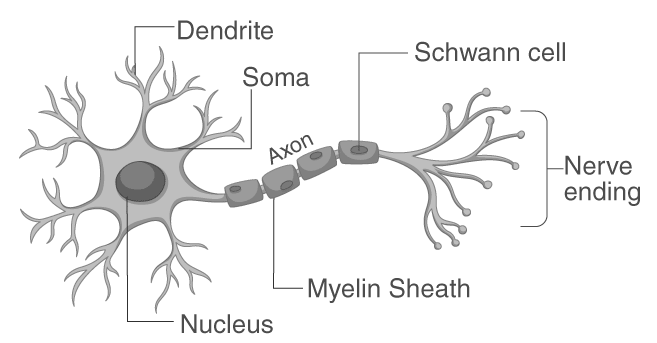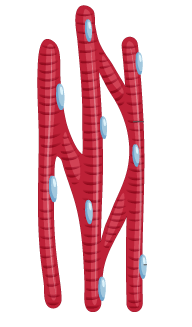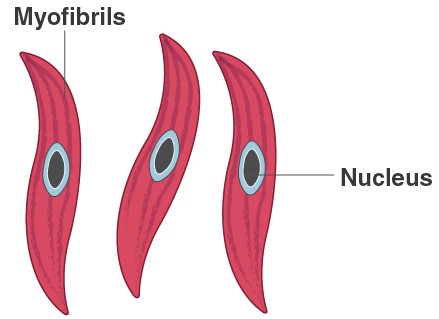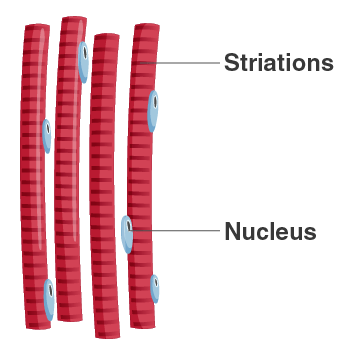NCERT Solutions Class 9 Science
The NCERT Solutions in English Language for Class 9 Science Chapter – 6 (Tissues) has been provided here to help the students in solving the questions from this exercise.
Chapter – 6 (Tissues)
Questions
1. What is a tissue?
Answer – Tissue is a group of cells that are similar in structure and are organised together to perform a specific task.
2. What is the utility of tissues in multicellular organisms?
Answer – The use of tissues in multicellular organisms is to provide structural and mechanical strength as well as to allow division of labour.
Questions
1. Name the types of simple tissues.
Answer – The types of simple tissues are parenchyma, collenchyma, sclerenchyma and aerenchyma.
2. Where is apical meristem found?
Answer – Apical meristem is found at the tip of root or shoot of the plant.
3. Which tissue makes up the husk of a coconut?
Answer – The husk of coconut is made of sclerenchymatous tissue.
4. What are the constituents of phloem?
Answer – Phloem is a conducting or vascular tissue of the plants. Phloem is made up of four types of elements: sieve tubes, companion cells, phloem fibres and phloem parenchyma.
Questions
1. Name the tissue responsible for movement of our body.
Answer – Muscular tissue is a contractile tissue made up of muscles. This tissue is responsible for movement in our body.
2. What does a neuron look like?
Answer – A neuron consists of a cell body with a nucleus and cytoplasm, from which long thin hair like parts arise. Each neuron has a single long part called the axon, and many small, short branched parts called dendrite. An individual nerve cell is called neuron, it may be upto a metre long.

3. Give three features of cardiac muscles.
Answer – The features of cardiac muscle are:
(i) These muscles are involuntary.
(ii) Cardiac muscle cells are cylindrical, branched and uninucleate.
(iii) These show rhythmic contraction and relaxation throughout the life.
4. What are the functions of areolar tissue?
Answer – Areolar tissue is a connective tissue which fills the space inside the organs, supports internal organs and helps in repair of tissues.
Exercise
1. Define the term ’tissue’.
Answer – Group of cells that are similar in structure and perform same function is called a tissue. E.g., phloem, xylem, blood are examples of tissue.
2. How many types of elements together make up the xylem tissue? Name them.
Answer – Xylem is a conducting or vascular tissue of the plants. It consists of four types of elements: (i) Tracheids (ii) Vessels; (iii) Xylem parenchyma; (iv) Xylem fibres.
3. How are simple tissues different from complex tissues in plants?
Answer – A simple tissue is made up of only one type of cells where as complex tissue is made up of different types of cells.
4. Differentiate between parenchyma, collenchyma and sclerenchyma on the basis of their cell wall.
Answer – The differences between cell walls of parenchyma, collenchymas and sclerenchyma are:
| Parenchyma | Collenchyma | Sclerenchyma |
| Cell walls are thin and made up of cellulose | Cell walls are thick at the edges due to the deposition of pectin | Cell walls are thick due to the deposition of lignin |
5. What are the functions of the stomata?
Answer – Stomata perform following functions:
(i) They allow exchange of gases (CO2 and O2) with atmosphere.
(ii) They help in the process of transpiration.
6. Show the difference between the three types of muscle fibres diagrammatically.
Answer – There are three types of muscle fibres, they are:
| Cardiac muscles | Smooth muscles | Striated muscles |
 |
 |
 |
1. Cardiac muscles
- Present in the heart.
- Involuntary in nature.
- They have 1 nucleus.
- The muscle fibers are branched.
2. Smooth muscles
- Found in lungs and alimentary canal.
- Involuntary in nature.
- They have 1 nucleus.
- They are spindle-shaped.
3. Striated muscles
- They are connected with bones
- Voluntary in nature.
- They are long and cylindrical muscle fibers.
- They possess many nuclei.
- Striated muscles are unbranched.
7. What is the specific function of the cardiac muscle?
Answer – It is cardiac muscles which are exclusively present in the wall of heart. It contracts and relaxes continousely with a rhythm, but it never gets fatigued.
8. Differentiate between striated, un-striated and cardiac muscles on the basis of their structure and site/location in the body.
Answer – Differences between striated, unstriated and cardiac muscles are as follows:
| Character | Striated muscles | Un-striated muscles | Cardiac muscles |
| Shape/Structure | Long, cylindrical, non – tapering.They are un-branched. | Long and tapering.They are un-branched. | Cylindrical and non – tapering.They are branched. |
| Location in body | Hands, legs and skeletal muscles | Wall of stomach, intestine, ureter and bronchi | Heart |
| Dark and light bands | Present | Absent | Present but less prominent |
9. Draw a labelled diagram of a neuron.
Answer – Diagram of a neuron along with the labelling is as follows:

10. Name the following.
(a) Tissue that forms the inner lining of our mouth.
(b) Tissue that connects muscle to bone in humans.
(c) Tissue that transports food in plants.
(d) Tissue that stores fat in our body.
(e) Connective tissue with a fluid matrix.
(f) Tissue present in the brain.
Answer –
(a) Tissue that forms the inner lining of our mouth – The epithelial tissue, Squamous epithelium.
(b) Tissue that connects muscle to bone in humans – Tendon
(c) Tissue that transports food in plants – Phloem
(d) Tissue that stores fat in our body – Adipose tissue
(e) Connective tissue with a fluid matrix – Blood, it is a fluid connective tissue
(f) Tissue present in the brain – Nervous tissue
11. Identify the type of tissue in the following:
Skin, bark of tree, bone, lining of kidney tubule, vascular bundle.
Answer –
Skin – Epithelial tissue (squamous epithelium);
Bark of tree – Cork (protective tissue);
Bone – Skeletal connective tissue;
Lining of kidney tubules – Cuboidal epithelial tissue;
Vascular bundle – Complex permanent tissue_xylem and phloem.
12. Name the regions in which parenchyma tissue is present.
Answer – Parenchyma is a simple permanent tissue which is present soft parts of the plant like cortex, pith, palisade of root and stem, mesophyll of leaves and some parts of the flo.
13. What is the role of epidermis in plants?
Answer – The epidermis in plants forms an uninterrupted and continuous layer that has no intercellular spaces. It provides protection.
14. How does the cork act as a protective tissue?
Answer – The outer protective layer or bark of a tree is known as the cork. It is made up of dead cells. Therefore, it protects the plant against mechanical injury, temperature extremes, etc. It also prevents the loss of water by evaporation.
15. Complete the following chart.

Answer – The completed chart is as follows:


Leave a Reply